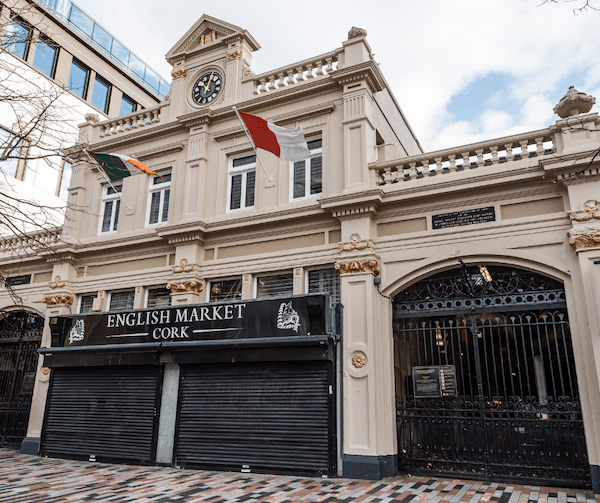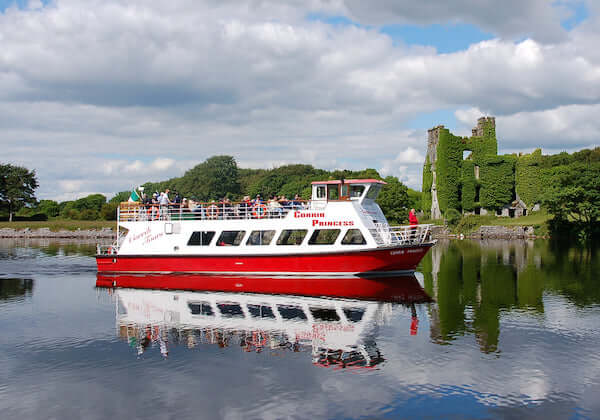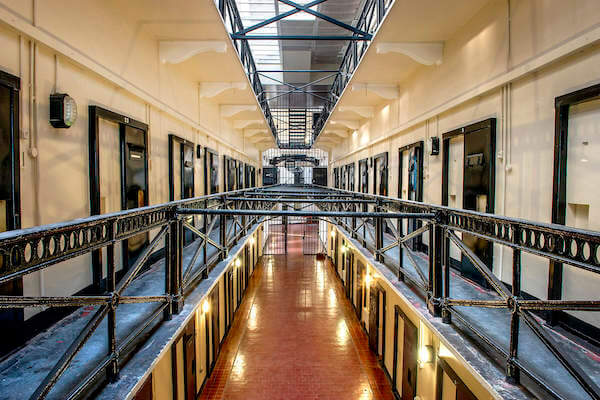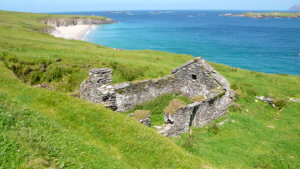Do you want to know how to plan an Ireland vacation? If so, you’ve come to the right place.
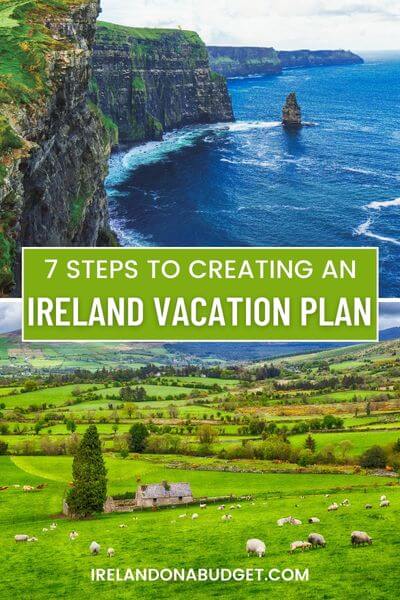 This post contains affiliate links, and I may earn compensation when you click on the links at no additional cost to you.
This post contains affiliate links, and I may earn compensation when you click on the links at no additional cost to you.
From deciding when to go and how much it will cost to figuring out what to take and how to access Wifi, it’s all here so you won’t be completely overwhelmed, and it will make planning your trip planning easier and more enjoyable.
Simply follow the 7 steps in this guide.
Step 1: Decide When You Want to Go to Ireland and How Much You Are Prepared to Spend
When to Go to Ireland
From a budget perspective, the best time to go to Ireland is during the shoulder season, which is roughly mid-April through May and late September through October.
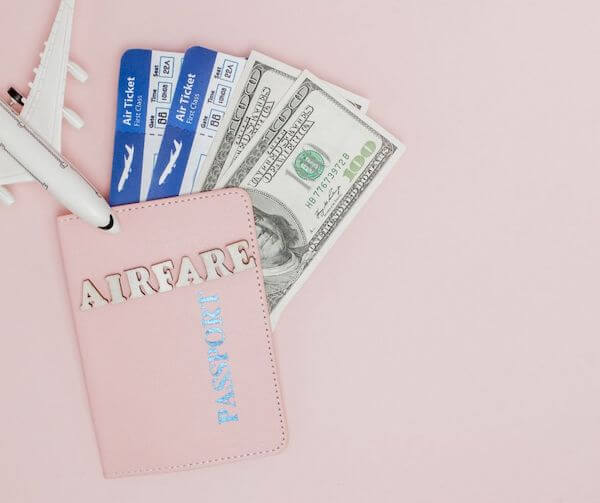
This is when the airfares are lower and when accommodation is more available — and cheaper too.
The weather in Ireland during the winter tends to be cool and damp, making it more difficult for outdoor activities but there may be days when it’s totally fine, so be sure to dress in layers and you’ll be fine.
During the winter months, the days are short so there’s not much sunlight compared to the summer months when it rarely gets dark before 10:30 p.m.

December in Ireland could be an ideal time if you love Christmas markets and cozy evenings by an open turf fire sipping a Guinness or some other cool drink.
Read the full article on the best time to visit Ireland
How Much Will It Cost?
Ireland isn’t exactly the cheapest destination, but that doesn’t mean you can’t visit it on a budget.
Of course, the word budget means something different to everyone and a lot of your spending will depend on your expectations, interests, and travel style.

As noted above, if you travel to Ireland during the off-season, you will find that your vacation costs are less.
In general, I suggest that you put aside €150 to €200 for additional spending, which will cover meals and other incidentals in case a vendor does not accept credit cards or if it is needed for a taxi, for example, although most do accept electronic payments.
Since the cost of everything has gone up all over the world in these post-pandemic times, it should come as no surprise that vacationing in Ireland will be more expensive in 2024, as it is throughout Europe in general.
Flights to Ireland are generally cheaper in the fall and winter months.
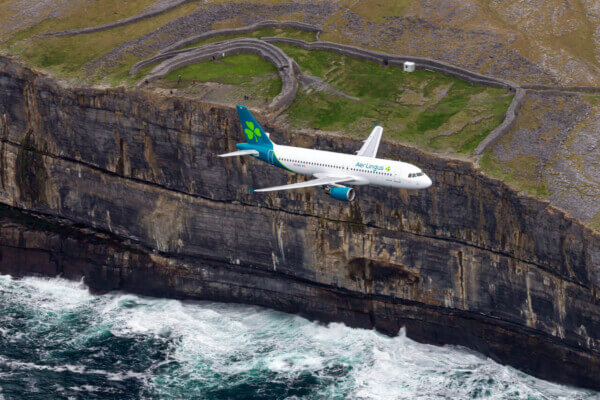
Check out Aer Lingus for their latest offers or simply go to Google Flights, put in your desired travel dates and let the system tell you when the fare goes up or down. I suggest doing this several months out so you can grab the cheapest fares.
Read the full article on budgeting for your trip to Ireland
Step 2: Do Your Own Research
There is undoubtedly a mountain of resources out there about travel to Ireland, including information on news sites, in magazines, blogs like this, Instagram, Facebook groups and so on.

It can get confusing, which is why I recommend you look at one or two resources, then assemble your thoughts in a notebook so that you can decide what parts of Ireland you really want to see and what attractions are in those regions.
Guidebooks
Traditional guidebooks are still popular since most of them are well researched and structured and will give you lots of information on destinations in Ireland as well as tips on how to find out-of-the-way places or other practical tips that will help you plan your vacation.
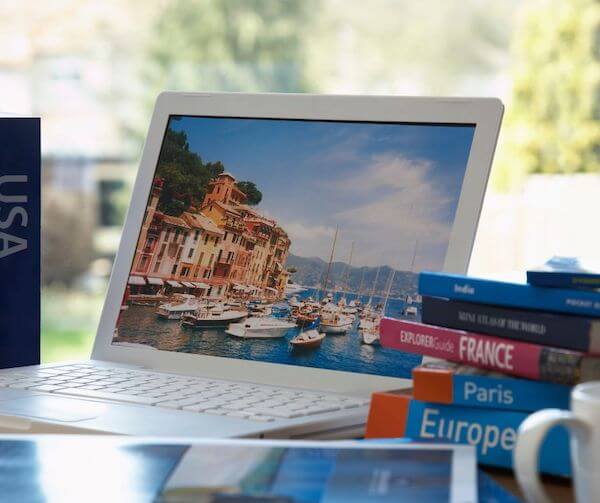
By clicking on the Amazon link below, I may earn a small commission from the Amazon Associates Program. However, you will not incur any additional costs by doing so.
Rick Steves’ guidebooks are always popular as are the guidebooks published by Lonely Planet, but of course, there are others too. So, visit your local library or bookstore and pick one that appeals to you. Do not order Amazon travel books that are being widely promoted by spammers in Facebook groups.
Group Tours vs. Private Tours
There are several types of tour companies in Ireland, some that offer only day tours and others that offer inclusive tours that include accommodation.
Many do not include airfare. Those that do include Aer Lingus and Gate 1 Travel, just to name two.
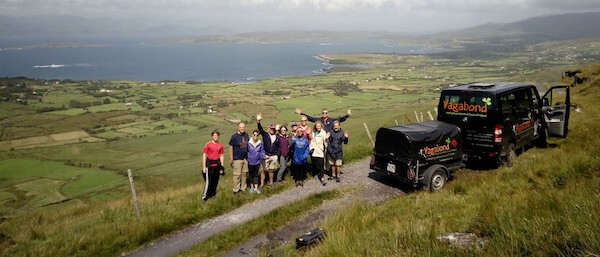
I’ve personally used Gate 1 for travel to other areas of the world and can highly recommend them as a budget-friendly tour agency.
Private tours cater to small groups like families who don’t want to go on a tour bus with 50 or more people. These generally cost more but like group tours, can vary a bit in terms of price and in what they offer.
If you want more flexibility, then a private tour might suit your needs.
Passports and Visas
Before you do anything else right now, check to see if your passport is valid and if you require a visa to enter Ireland.
Most people (those coming from Canada, the United States, the UK, New Zealand, and the European Economic Area) are allowed to visit Ireland without a visa for a period of up to 90 days.
However, residents of some countries are required to apply for a Short Stay C visa to visit Ireland.
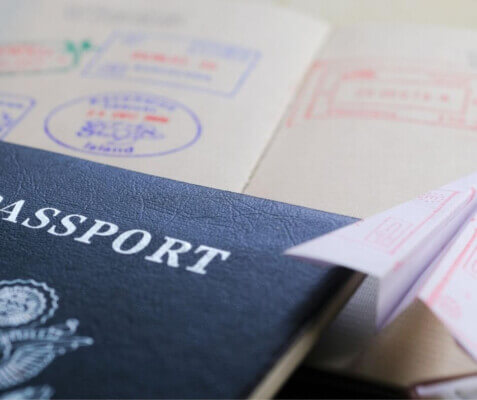
You will find more information on the Irish government’s immigration website.
According to the U.S. State Dept., there is no minimum passport validity requirement for U.S. citizens entering Ireland.
Contact your country’s passport control office to find out its specific requirements when traveling to Ireland.
Read more about our tips and advice to get you to Ireland safely
Step 3: Planning Your Itinerary
Planning an Ireland vacation itinerary is perhaps the hardest part of getting ready to visit Ireland.
While Ireland is a small country, there’s plenty of ground to cover and attractions to see.
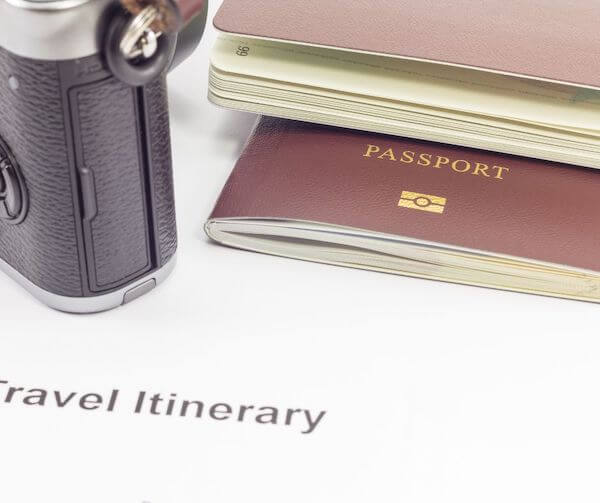
As a general rule, it might be best when you are creating your itinerary to spend at least 2-3 nights in each place so that you can enjoy each region as much as possible.
If you are planning a 10-day itinerary, for example, then 3 main stops would be good idea. Of course, you may want to divert from that, which is perfectly fine too.
But don’t try to do too much as you’ll simply feel exhausted toward the end of your trip, and you may regret not staying in a particular place for longer.
Where Exactly to Go
Provided that you have done some research on this website or another one, or you have purchased a travel book, you’ll more than likely have a fair idea of where you want to go.
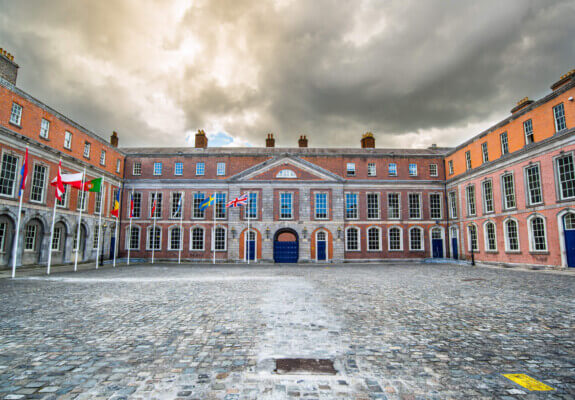
Ireland’s most popular cities/towns include the capital Dublin, Galway, Cork, Belfast (technically in Northern Ireland but on the island of Ireland), Kilkenny and Killarney.
On the Ireland on a Budget website, you’ll find information on other, lesser-known or overlooked destinations as well as information on gem attractions that you might want to add on to your itinerary.
The destinations page is currently being updated, so check back for more information on additional locations to see in Ireland.
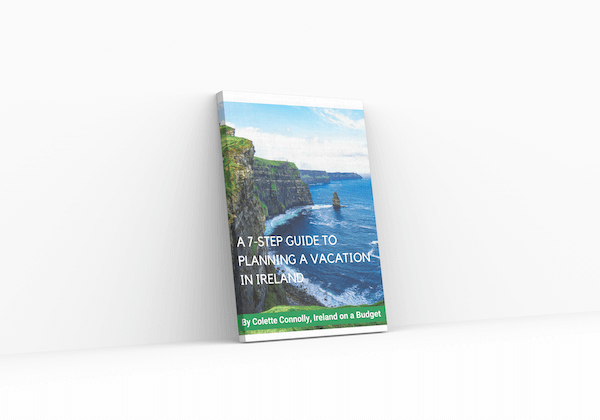
You can purchase an e-book version of this post on the Ireland on a Budget Etsy Store.
Suggested Itineraries
If this is your first trip to Ireland, like other first-time visitors, you will most likely start your journey in Dublin.

If you’re not planning to rent a car and you’ll be using public transportation instead, this 14-day itinerary will give you some ideas as well as educate you about Ireland’s buses and trains and how to navigate the country using them.
If you do have a rental car, this 10-day itinerary will also be helpful.
Discover Vacation Homes in Ireland
When to Start Booking Your Trip
Now that the pandemic is squarely behind us, travel has resumed to normal levels again and that means that Ireland — and Europe in general — is very popular, especially during the summer months.
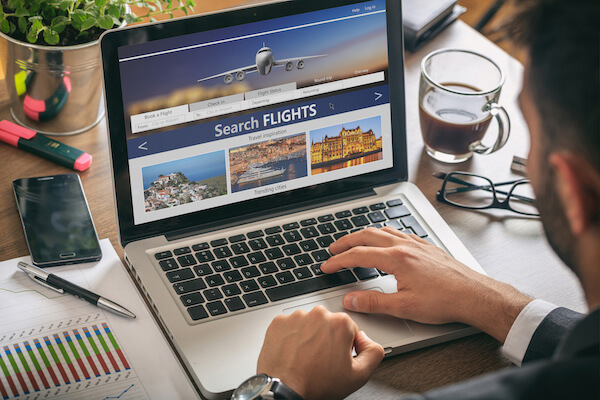
I suggest that you start doing some airfare research by creating a Google Flights alert, which will tell you when the fare goes either up or down for your travel dates.
You should also sign up for emails from Aer Lingus so that you know when their airfare discounts are being released, in addition to knowing what American, United and Delta airlines are offering.
Booking accommodation in advance (6 months at the very least) is crucial as Ireland is suffering from a shortage of accommodation due to the migrant crisis.
Day Tour Bookings
Day tours to popular attractions like Newgrange, the Book of Kells and Kilmainham Gaol sell out very fast so be sure to book those in advance.
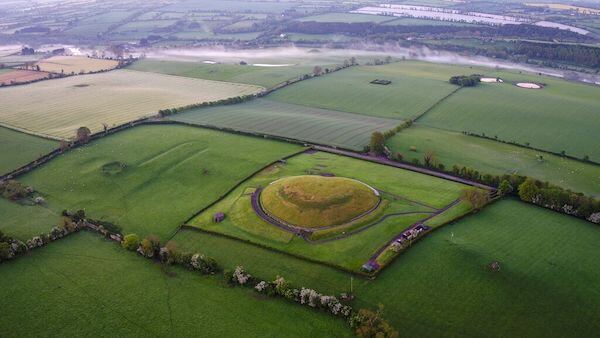
You can use Get Your Guide or Viator to search for day tours in Ireland.
Step 4: Book Your Flights and Travel Insurance
Most flights to Ireland are direct unless you’re in a part of the U.S. or other country where a connection is required.
International flights come into either Dublin or Shannon. You can also fly into Belfast easily from the U.K. or if you want to bring your own car, a ferry would be necessary.
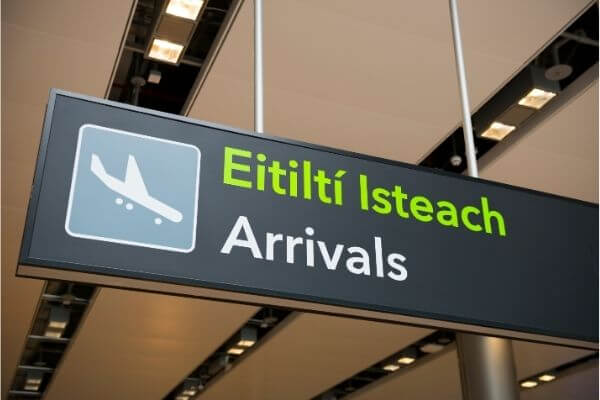
If you’re traveling from the U.K. or mainland Europe, you may be flying into Ireland’s regional airports, including Cork Airport, Ireland West, or Belfast International Airport in Northern Ireland.
To find the best flight deals, you could use a variety of flight aggregators, including Google Flights, Skyscanner, CheapoAir, AirfareWatchdog, Momondo, the Way Way app that gives you cash back on travel purchases, and more.
Travel Insurance
Once your flights are booked, you should consider purchasing travel insurance to cover you if an unforeseen medical emergency happens while you are in Ireland.
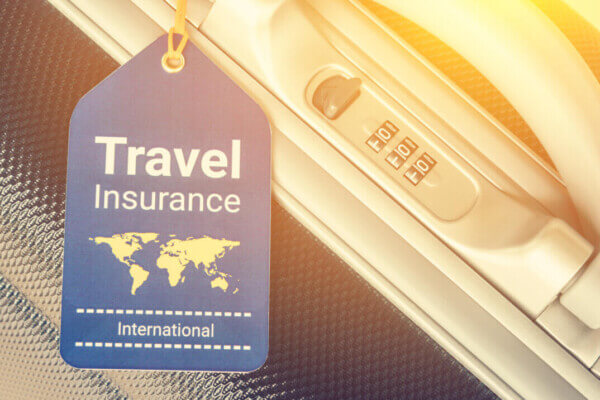
I recommend looking into Travel Master insurance coverage, a service that will allow you to compare quotes and insurance policies from different companies.
Step 5: Book Accommodation and Transportation (Either Public Transport or Car Rental)
Accommodation
If you’re not purchasing an all-inclusive tour package, you’ll need to book accommodation yourself, and that should definitely be an integral part of your Ireland vacation planning.
Ireland has an assortment of hotels, B&Bs, Airbnb accommodation and additional rentals.

You could use Booking.com to make reservations or BandBIreland.
There are many hotel search websites to choose from, including Hotels.com, TripAdvisor, Expedia, Trivago, and others.
Perhaps you are a member of a hotel rewards club like Hilton Honors, IHG, Raddison, Marriott or another hotel chain and you can earn rewards by staying at their properties in Ireland.
Take $25 off your hotel reservation when you sign up with Hopper. Click on the link below to get the special Ireland on a Budget savings code.
Sign up for Hopper
Additional Reading:
- Affordable Hotels and Guesthouses in Dublin: 8 You Should Know About
- Where to Stay in Cork City: 7 Hotels & Guesthouses to Suit Your Budget
- 10 Affordable Hotels in Belfast that are Worth Staying In
- 10 Affordable Hotel Stays in Galway City
Bus and Train Travel in Ireland
During the busy travel season, it’s best to book your bus and train tickets if you are relying on public transportation to get around Ireland.
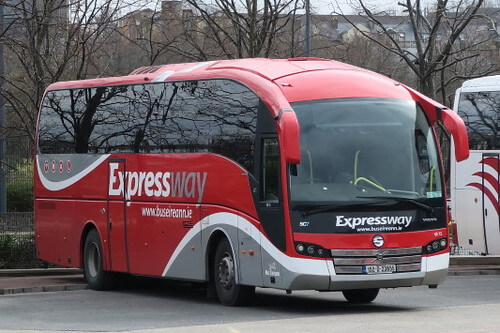
The best way to do that is to log on to the websites directly. Bus Eireann is the primary provider of bus travel in Ireland, although there are several private bus companies in operation too.
They include Aircoach, which provides a service from Dublin Airport to places around Dublin as well as Galway, Derry and Belfast, in addition to Dublin Coach, which has an extensive service to many places around Ireland.

Irishrail.ie is where you can book train tickets. Dublin is the main hub for Ireland’s rail system, and it is where the primary train routes will originate from.
Getting to some destinations by train may require a transfer to another line or to a local bus.
If you want to know the distance between destinations in Ireland, you could use Google Maps or Rome2Rio, a popular app.
Find Your Irish Ancestors with Ancestry.com – try a free trial for 14 days
Car Rental in Ireland
Renting a car to see Ireland is really the best way to explore the country as it will give you more flexibility and you’ll be able to get to places that public transportation won’t get you to.
However, renting a car in Ireland can be expensive, especially during the busy tourist season.
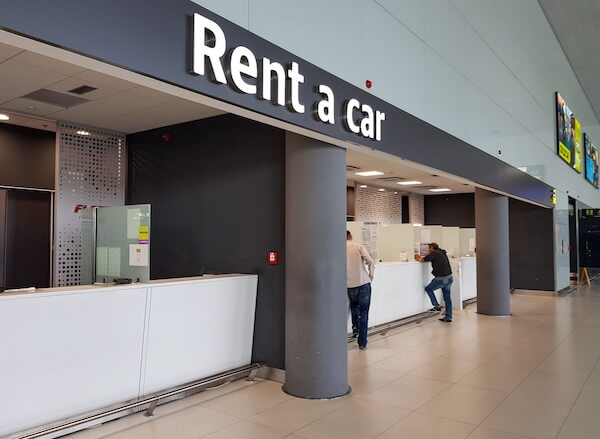
You can drive with your home license when renting a car in Ireland.
Standard transmissions are the norm in Ireland but if you can’t drive one or you’re not comfortable using a stick shift, you can easily rent an automatic. The cost will be higher though.
Rent a smaller car (the smallest that will fit your luggage) to keep the costs down.
I suggest booking with Discover Cars as it will give you a range of choices with many different car rental companies.
Read more about renting a car in Ireland with the right credit card
Step 6: Book Activities and Day Tours
Major Attractions to Put on Your Itinerary
Dublin, Cork, Galway, and Belfast in Northern Ireland are among the top cities for tourists visiting Ireland.
As part of your Ireland vacation planning, you should include at least some of these places on your itinerary.
Dublin
- Book of Kells – official ticket site or see the Book of Kells exhibition, Dublin Castle and Christ Cathedral all on one tour.
- Guinness Storehouse – buy tickets on Get Your Guide.
- Kilmainham Gaol – official ticket site.
- EPIC – The Irish Emigration Museum – buy your tickets at Get Your Guide.

The haunted Kilmainham Gaol, now a popular Dublin tourist attraction. Photo: Elaine Butler for Getty Images.
Cork
- St. Anne’s Church & The Shandon Bells – official ticket site.
- The English Market – official website or take a Cork Culinary Tour.
- St. Fin Barre’s Cathedral – official ticket site.
- Cork City Gaol – buy tickets on Viator.

The English Market in Cork, a popular destination for foodies. Photo: Juan Jimenez.
Galway
- St. Nicholas’s Collegiate Church – Free admission.
- Hop On Hop Off Bus Tour – buy tickets on Get Your Guide.
- Galway Museum – free admission.
- Corrib Princess River Cruise – official ticket site.

The Corrib Princess boat on the River Corrib. Photo courtesy of Corrib Princess Facebook.
Belfast
- Titanic Belfast – buy tickets at Get Your Guide.
- Black Taxi Tour (includes Peace Walls) – buy tickets at Get Your Guide.
- Hop On Hop Off Bus Tour – official ticket site or buy tickets at Get Your Guide.
- Crumlin Road Gaol – buy tickets at Get Your Guide.

The interior of the renovated Crumlin Road Gaol. Photo courtesy of Bill Abernethy for Crumlin Road Gaol.
If you want to learn more about attractions in a specific region, a day tour may be the solution for you. If are relying on public transportation, this option is ideal.
You’ll find ideas on day trips from Dublin, Cork and Galway on this website.
Step 7: Get Ready For Your Departure to Ireland
As a longtime member of the European Union, Ireland uses the Euro currency. Northern Ireland uses the British pound Sterling.

There is no need to carry a lot of cash on you.
Around €150 to €200 should be sufficient for the purchase of incidentals throughout your trip. If you need more, there are ATMs all over Ireland.
Credit and debit cards are used widely. Mastercard, Visa and American Express cards are accepted (although Amex is not accepted by all merchants). Discover cards are unlikely to be accepted in Ireland.
Be selective about the cards that you bring with you. I suggest using a credit card that does not charge a foreign transaction fee since those fees will add up as you use ATMs and charge for meals and other expenses while in Ireland.
If you need to exchange currency in Ireland, the cheapest place to do it is at any local post office in the Republic of Ireland.
Arranging Transport from the Airport
If you are flying into Dublin Airport, you might want to book a taxi beforehand or you can take a bus to the city center, which can also be booked in advance.
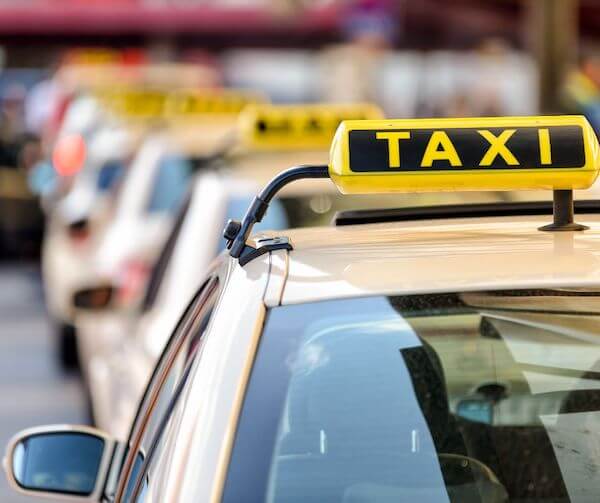
The estimated cost is between €25 and €30, which is payable in cash or by credit card.
If you are arriving in Shannon Airport and you are not renting a car, you’ll have to rely on buses to get you to your destination.
I encourage you to book your travel ahead of time on Bus Eireann. You can find more detailed information on the Shannon Airport website.
Fares are around €20 one-way but it depends on the destination.
Planning Internet Access
Many people want to know how they can access Wifi cheaply in Ireland, and there are several ways to do that.
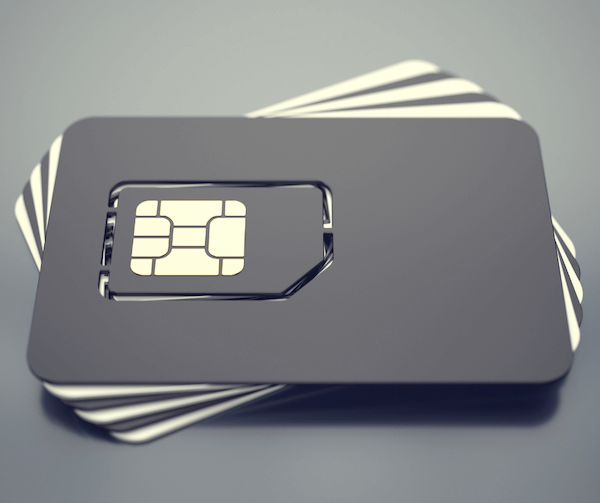
- Use your cell phone provider’s roaming plan – this is probably the most expensive option but it is undoubtedly the easiest as there is nothing for you to do when you get to Ireland. Just continue to use your phone as you would at home, and you will be billed accordingly.
- Local SIM Card – buy a local sim card at Dublin Airport (available at the WH Smith bookstore in Terminal 1 and at the Spar convenience store in Terminal 2). You could also wait until you reach the city center to buy one in any mobile phone store. For €25, you can get 20 gigabytes of data and 100 minutes plus unlimited texting capability within Ireland that is valid for about 30 days. Once you insert the local SIM card, you'll get an Irish mobile phone number.
- Ordering an e-sim from Airalo is another budget-friendly alternative. E-sims work best on newer phones.
- Use a portable Wifi device like Wifi Candy that provides unlimited data throughout Ireland – take 10% off with code IOB2024.
- Or you may just want to turn your data off and use Wifi when you can get it in hotels, restaurants, pubs and such. And that option won’t cost you anything.
Packing for Your Ireland Trip
When packing for your trip to Ireland, it’s best not to bring too much.
If you are planning to see Ireland using public transportation, be sure to bring luggage that can withstand getting in and out of buses and trains.
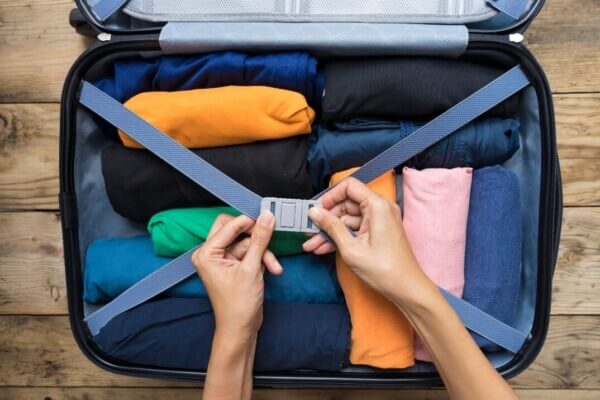
My advice is to bring a medium-sized piece of luggage that can be checked in plus one carry-on item.
If you decide to travel with carry-on luggage only, be sure to read the Ireland on a Budget carry-on luggage guide.
Read more about packing for your trip to Ireland
Must-Have Items for Your Ireland Vacation
By clicking on the Amazon links below, I may earn a small commission from the Amazon Associates Program. However, you will not incur any additional costs by doing so.
Luggage – American Tourister makes a variety of different types of luggage that is affordable, durable and suitable for any type of traveler. The company is owned by Samsonite, a familiar brand.
Travel Notebook – get the Ireland on a Budget notebook where you can record all your vacation plans in one place.
Itinerary Guides – get the Ireland on a Budget itinerary guides on Etsy.
Backpack – a sturdy backpack is handy when you’re on the go and especially handy if you intend to hike or take long walks in Ireland’s beautiful countryside.
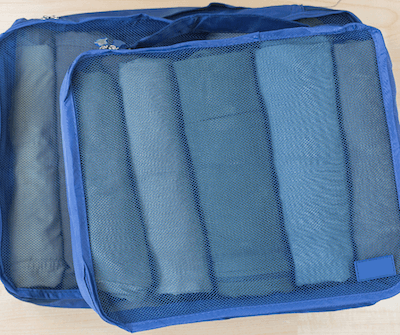
Packing Cubes – these nifty products do a great job of keeping your clothing and other items neatly packed and it’s an economical use of space. Used by me personally on my trips to Ireland and elsewhere.

Plug Adapter – you will need an adapter to charge your phone and other electronic devices in Ireland. Converters are rarely needed unless you have something that is not dual voltage, and most new products are capable of this.
Mobile Phone Battery Charger – a must-have if you’re on the go a lot.
Are you struggling with how to plan a vacation to Ireland? If so, you might want to also join our growing Facebook community.




